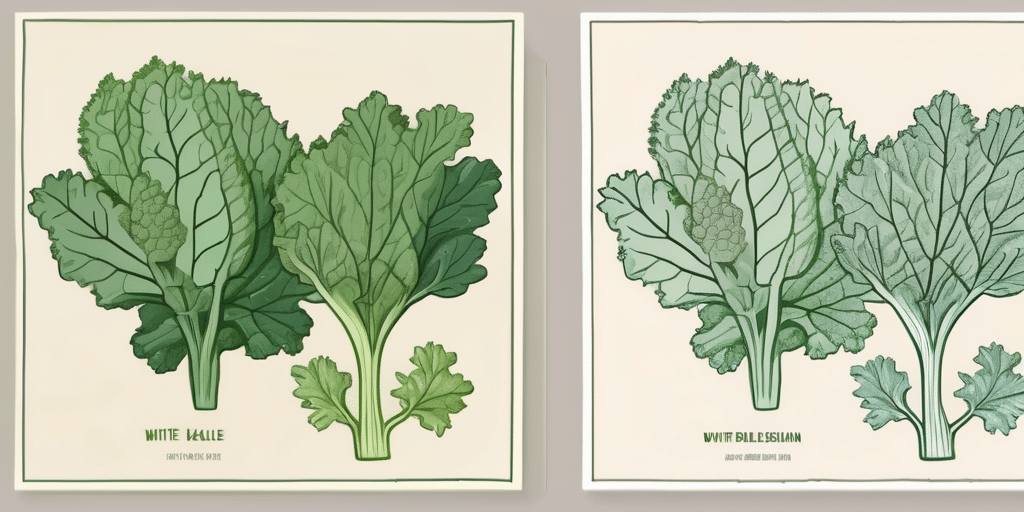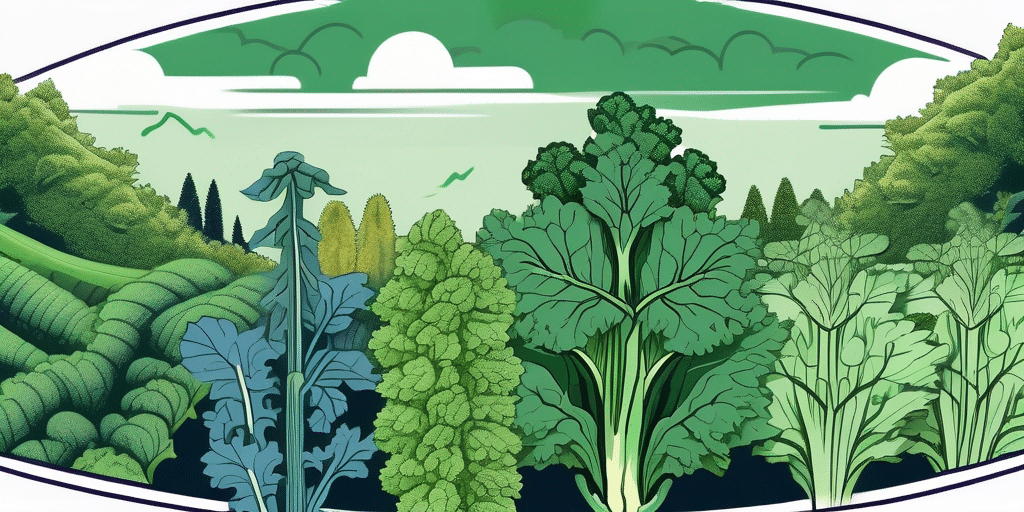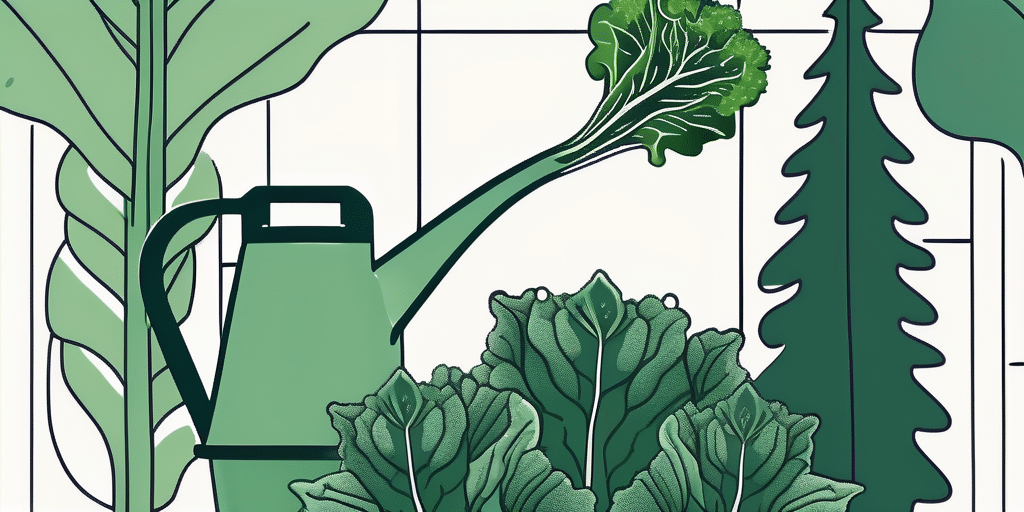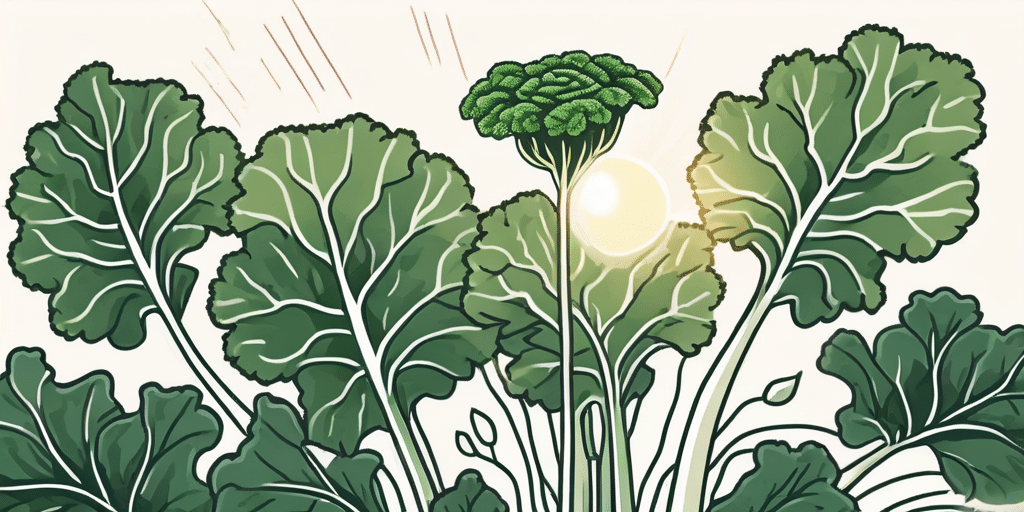Kale is a versatile and nutritious leafy green that can thrive in Zones 7a and 7b. If you’re in these zones and want to grow kale, you’re in luck! In this article, we’ll cover everything you need to know about planting and growing kale in Zones 7a and 7b.
Best Kale Varieties for Zones 7a and 7b
Before we dive into the details of growing kale, let’s take a look at some of the best kale varieties that are suitable for Zones 7a and 7b:
- Curly Kale
- Tuscan Kale (also known as Lacinato or Dinosaur Kale)
- Red Russian Kale
- Siberian Kale
- Chinese Kale (also known as Chinese Broccoli or Gai Lan)
These kale varieties have proven to perform well in Zones 7a and 7b, so be sure to consider them when planning your kale garden.
Curly Kale, known for its ruffled leaves and hearty texture, is a popular choice among kale enthusiasts. It is versatile in the kitchen and can be used in salads, smoothies, or even baked into crispy kale chips. This variety thrives in cooler temperatures, making it ideal for Zones 7a and 7b where the climate is suitable for its growth.
Tuscan Kale, also referred to as Lacinato or Dinosaur Kale, stands out with its dark blue-green leaves that have a slightly sweeter flavor compared to other kale varieties. It is a staple in Italian cuisine and is often used in soups, stews, and pasta dishes. Tuscan Kale is known for its high nutritional value, packed with vitamins and antioxidants that promote good health.
Growing Kale in Zones 7a and 7b
Kale is a cool-season crop that thrives in full sun but can also tolerate partial shade. Here are some essential tips for growing kale in Zones 7a and 7b:
When selecting kale seedlings or seeds for planting in Zones 7a and 7b, consider varieties that are well-suited for the region’s climate. Some recommended varieties include Lacinato (also known as Dinosaur kale), Red Russian, and Winterbore. These varieties are known for their ability to withstand cooler temperatures and are less likely to bolt in the heat of Zones 7a and 7b.
- Start with healthy kale seedlings or grow your own from seeds indoors 4-6 weeks before the last frost date.
- Prepare the soil by removing any weeds and adding organic matter to improve drainage and fertility.
- Plant the kale seedlings or seeds in well-draining soil, spacing them about 12-18 inches apart.
- Water the plants regularly, aiming for about 1 inch of water per week, either through rainfall or irrigation.
- Apply a layer of mulch around the plants to help retain moisture, suppress weeds, and regulate soil temperature.
- Fertilize the kale plants every 4-6 weeks with a balanced organic fertilizer to promote healthy growth.
- Monitor for pests such as aphids, cabbage worms, and flea beetles, and take appropriate action if necessary.
- Harvest the outer leaves of mature kale plants when they reach your desired size, leaving the center leaves to continue growing.
For gardeners in Zones 7a and 7b, it’s important to be mindful of the transition from cool spring temperatures to the warmer summer months. To extend the kale growing season, consider using shade cloth to protect the plants from excessive heat. This can help prevent the kale from becoming bitter and tough, ensuring a more pleasant eating experience.
By following these steps, you’ll be on your way to a successful kale harvest in Zones 7a and 7b.
Climate & Hardiness in Zones 7a and 7b
Zones 7a and 7b have a moderate climate that is suitable for growing kale. With average annual minimum temperatures ranging from 0 to 10 degrees Fahrenheit (-18 to -12 degrees Celsius), kale can withstand the occasional winter freeze in these zones.
However, it’s important to note that kale can be sensitive to extreme heat in Zones 7a and 7b. To protect your kale plants from summer heat stress, consider providing shade with row covers or planting them in a location with partial shade.
In addition to kale, Zones 7a and 7b are also ideal for growing a variety of other cool-season crops such as broccoli, Brussels sprouts, and Swiss chard. These crops thrive in the cooler temperatures of spring and fall, making them well-suited for cultivation in these zones.
Furthermore, the moderate climate of Zones 7a and 7b provides an excellent environment for perennial herbs like thyme, oregano, and sage. These herbs not only add flavor to your dishes but also attract beneficial pollinators to your garden, enhancing overall biodiversity.
When to Plant Kale in Zones 7a and 7b
The timing of when to plant kale in Zones 7a and 7b depends on both the desired harvest time and the specific kale variety. Here are some general guidelines:
- For a spring harvest, start sowing kale seeds indoors 6-8 weeks before the last frost date or purchase seedlings from a local nursery.
- For a fall harvest, sow kale seeds directly in the garden about 6-8 weeks before the first expected fall frost date and provide protection from frost if necessary.
By planting at the right time, you can maximize the growth and flavor of your kale plants in Zones 7a and 7b.
Kale, a nutrient-dense leafy green vegetable, thrives in cooler temperatures, making it an excellent choice for Zones 7a and 7b where the climate is suitable for its growth. In addition to timing, soil preparation is crucial for successful kale cultivation. Ensure your soil is well-draining, rich in organic matter, and has a pH level between 6.0 and 7.5 for optimal kale growth.
When planting kale in Zones 7a and 7b, consider companion planting to maximize space and deter pests. Kale pairs well with herbs like dill and chamomile, which can help repel harmful insects and attract beneficial ones. Intercropping kale with other vegetables such as carrots or radishes can also help improve soil health and overall garden productivity.
When to Harvest or Pick Kale in Zones 7a and 7b
Kale is a cut-and-come-again crop, which means you can harvest the outer leaves of mature plants while allowing the center leaves to continue growing. Here are some tips for knowing when to harvest or pick kale in Zones 7a and 7b:
- Harvest young kale leaves when they reach about 8-10 inches in length for tender and milder-flavored greens.
- For more mature and slightly stronger-flavored kale, harvest leaves when they are around 12-18 inches in length.
- Regularly monitor your kale plants and harvest leaves as needed, avoiding any yellow or damaged leaves.
Remember, regular harvesting promotes new growth and helps keep your kale plants productive throughout the season.
Frequently Asked Questions
Here are answers to some frequently asked questions about growing kale in Zones 7a and 7b:
- Can kale tolerate frost? Yes, kale is a cold-hardy vegetable that can tolerate frost and even becomes sweeter after exposure to cooler temperatures.
- Do I need to provide winter protection for kale in Zones 7a and 7b? While kale can tolerate winter temperatures in these zones, providing some winter protection like row covers or mulch can help ensure a continuous harvest.
- How often should I fertilize kale? Kale plants benefit from being fertilized every 4-6 weeks during the growing season. Use a balanced organic fertilizer following the manufacturer’s instructions.
- Can I grow kale in containers? Yes, kale can be grown in containers in Zones 7a and 7b. Choose a container with good drainage and provide adequate sunlight and regular watering.
Now that you have answers to these common questions, you’re well-equipped to grow kale in Zones 7a and 7b.
Remember, always consult reliable sources such as the USDA or your local agricultural extension office for specific information tailored to your area. Happy growing and enjoy the delicious and nutritious harvest of kale in Zones 7a and 7b!
Join How to Grow Everything for More Gardening Success!
Ready to take your gardening skills to the next level? Subscribe for free to How to Grow Everything and learn how to build the garden of your dreams! Receive personalized gardening advice tailored to your specific zone, experience, and interests. Enjoy the best gardening tips, special offers, and deals delivered straight to your inbox – all 100% free, from our family to yours. Don’t miss out on our extensive library of free growing and gardening articles designed just for you. Subscribe now and be part of a community dedicated to gardening success!






